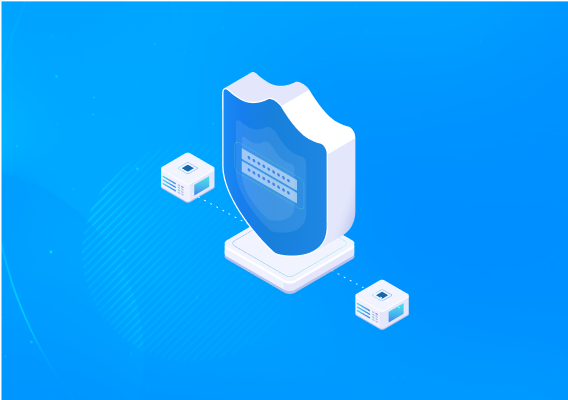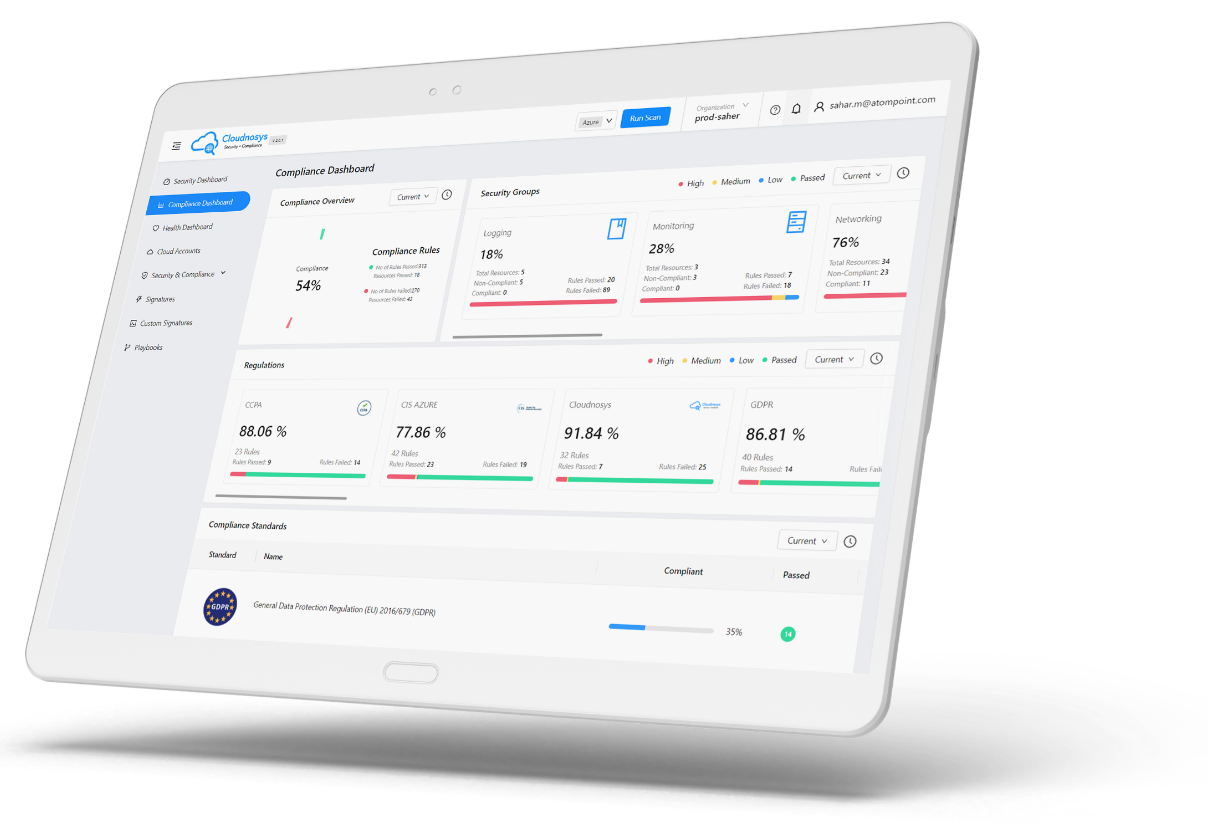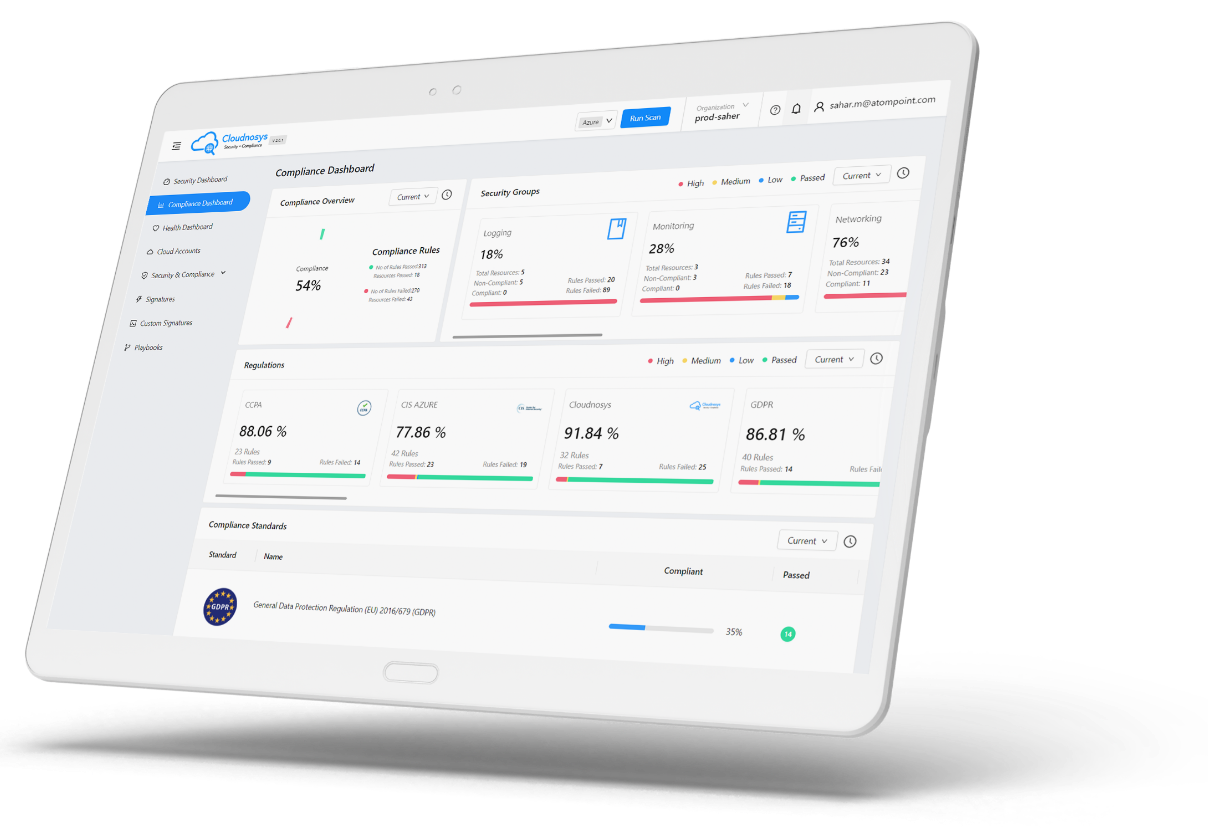Cloud security solutions and many shield workloads and resources running on public cloud services which solve many challenges, however, how do you select them for full protection? These security solutions are divided into a plethora of categories that are listed below. It’s important to understand what they mean and how you can select a solution that provides that full 360 protection with the least amount of effort and tooling.
CWPP – Cloud Workload Protection Platform
CWPP is a comprehensive system for expanding visibility into cloud resources primarily compute, with the primary goal of securing cloud workloads. This empowers you to execute safety functions across a variety of environments. Essentially providing OS hardening to host-level analysis.
CSPM – Cloud Security Posture Management
CSPM implements continuous, controlled compliance and security procedures for the protection of the infrastructure where cloud workloads are delivered. This platform aids in the prevention of compliance issues and software configuration flaws. Essentially this area is analyzing your “configurations” of cloud services. The majority of security breaches are due to misconfigurations.
CASB – Cloud Access Security Broker
CASB is the solution that extends visibility into the cloud infrastructure data layer. It is located in the middle of both the on-premise and the cloud environment. Focusing on data access and data movement is important and improves security posture on the cloud. Although in terms of priority of protection, you need to get CSPM first, and then CWPP, and then anything else. The 90% protection will be from CSPM+CWPP for starters.
CNAPP – Cloud-Native Application Protection Platform
An integrated application that is used for the security of its environment is the Cloud-Native Application Protection Platform. It is the first platform of the industry that brings threat and application context to merge CWPP for the protection of workloads for instance containers, VMs, and serverless functions, and CSPM for the infrastructure of the public cloud.
CNAPP expands data safety of the Cloud that includes malware detection and Data loss safety – risk prevention, compliance, and governance to address the requirements of this advanced cloud-native application environment while enhancing protection capabilities and minimizing the overall cost of cloud security.
Cloud Compliance
This software does not only scan the cloud infrastructure but looks for the violations of compliance as well. Cloud compliance is mostly automated and consists of alerts and is able to produce audits for every compliance standard. Again, looking at cloud configurations and workload vulnerabilities to come up with reporting on if infrastructure services are compliant or not.
Cloud Data Security
Cloud Data Security is basically a diverse variety of software that manages storage access restrictions and processes to safeguard cloud-based applications and data. One core area this analyzes is data access, and also malware analysis on storage.
Let’s have a comprehensive overview of security concerns:
Security has been a major concern in cloud computing since its beginning. Enterprises today are storing data on the cloud. They rely on the cloud for mission-critical complicated workloads. Following are some of the most critical security concerns that cloud-based businesses face.
Removal and breaching of sensitive data
Data sharing is quite easy in the cloud environment. In most circumstances, the public internet can directly access cloud environments. And users are capable of accessing data through public links and direct email invites. By default, cloud-based records, and cloud storage buckets are mostly unsecured in default setting mode, one must be careful in configuring storage correctly
Though the cloud’s open nature facilitates cooperation, it poses significant security concerns to sensitive information if not handled appropriately. Proper safeguard and governance tools should be implemented to reduce data loss. Hackers can look for misconfigurations to locate and compromise freely available data volumes. Any flaw in cloud resources accesses control can be used to exfiltrate and access sensitive data. This is why CSPM and CWPP based tools like Cloudnosys are becoming so important in running cloud services.
Compliance and data privacy
CCPA, PCI/DSS, HIPAA, and GDPR all these regulations have tight information security rules for firms that keep customer information, with severe fines for non-compliance. Along with users’ information, the enterprises own intellectual property or important proprietary company data.
In the cloud, the benefits of keeping this sort of data are numerous. This is why a wide range of cloud services are being certified for them and many other compliance standards. But still, the organizations must implement cloud services with suitable security procedures.
Gaining visibility over everything that is operating in the cloud environment plus a detailed view of its safety methods are challenging for sure. Moreover, it is crucial as well to document the availability of security procedures to auditors.
Accidental Exposure and Misconfiguration
Cloud infrastructure is distinguished by a great variety of computing assets many of which are generated automatically using technologies such as container orchestration or auto-scaling. All these resources could hold sensitive information or provide access to sensitive networks.
It can be exceedingly difficult to verify that all virtual machines, containers, and storage volumes are adequately secured when they are potentially in thousands if proper CWPP and CSPM tools are not in place. It’s just too convenient for a single employee to unwittingly create a storage bucket or start a compute instance, fail to establish security properly, and expose the enterprise to a data breach. If proper scanning tools are running then they can detect this behavior in seconds and remediate it automatically. Cloudnosys is such a platform that can fix and remediate these conditions.
Sovereignty of DATA
Many cloud companies have multiple data centers that are spread across the globe. This boosts cloud resources’ performance and availability while also making them more resistant to disruptions for example power outages or natural disasters.
On the other hand, firms that keep information in the cloud are unaware of the location of data storage. Many standards and regulations demand data be kept in a defined physical location. Such as, the GDPR prohibits European residents from transferring data outside Europe.
Furthermore, different regions and countries have different rules governing data access for national security objectives or law enforcement, which might threaten corporate data privacy and security. Security and compliance tooling is needed to manage these risks. Cloudnosys provides these capabilities.
Pragmatic approaches to fix cloud security issues
CWPP – Cloud workload protection platform
CWPP is the solution for the security of cloud workloads like:
- Applications operating on virtual machines
- Serverless applications
- API endpoints that are cloud-based
- Containerized applications
- Cloud-based databases and storage
Most businesses lack the controls necessary to guarantee that workloads are delivered correctly and have robust security measures. In a single platform, CWPP consolidates control and visibility of cloud systems across numerous cloud providers.
CWPP performs security functions like hardening, vulnerability scanning and remediation, network segmentation, system integrity checks, and application whitelisting.
CSPM – Cloud Security Posture Management
CSPM examines cloud infrastructure and gives alerts about compliance threats and software configuration flaws. Oversight or human error are the most typical causes of these dangers.
As per Gartner, the chief objective of Cloud Security Posture Management systems is to manage compliance and security while also providing full control over the configuration of cloud infrastructure.
CSPM is frequently offered as a cloud-based service and the following are the activities that it automatically and continuously performs:
- Maintain a cloud resource inventory and keep track of resource generation and modification across the environment.
- Ensure policy implementation is consistent across many cloud vendors while providing visibility.
- Examine compute instances for settings or misconfigurations that could be exploited.
- Look for configuration problems in storage buckets that could expose data.
- Check for compliance with relevant compliance obligations while using cloud resources.
- Assess the risk of cloud systems using recognized frameworks such as NIST and ISO.
- Verify that operational activities are proceeding as planned; some, such as key rotation, can be crucial in terms of security.
CASB – Cloud Security Access Broker
CASB solutions and services act as a bridge between two interconnected environments: a cloud vendor’s infrastructure and the organization’s on-premise infrastructure.
A CASB, once established, extends the organization’s visibility and controls by executing its security protocols beyond the boundaries of the on-premises architecture.
The Cloud Access Security Broker solutions use the following techniques to enhance visibility and control:
-
Firewalls
for the identification of malware and the prevention of access to the business network.
-
Web Application Firewalls
often termed WAFs applies to stop and prevent threats that originate at the software level.
-
Authentication
verifies the credentials of the users and blocks access to the content that is unauthorized.
- Data Loss Prevention
also known as DLP assists in preventing illegal sensitive data flows outside of the firm’s permitted data pools.
A CASB applies these methodologies to guarantee that all traffic of the network between on-premise and cloud resources meets the security plans of the enterprise. CASBs look at how people are using the cloud across all of its resources and then look for unauthorized activity. However, in a few cases, automated procedures may impose related policies at the discovery of particular anomalies.
Cloud Data Security
The software Cloud Data Security is used for the safety of data saved in cloud-based applications or cloud services by the implementation of storage-related policies and access controls.
The tools of Cloud Data Security are used for:
- Continuously integrating security measures across multiple cloud storage networks.
- Shielding data that is kept in the cloud or moved from or to cloud networks.
- Managing governance, setting permissions, and monitoring sensitive data access.
- Encrypting data in transit or at rest.
- Using data loss monitoring tools to keep sensitive information from being changed, destroyed, or moved beyond the boundaries of the firm.
Cloud Compliance
When it comes to the use of Cloud Compliance software so it manages compliance management and verifies regulatory standards for the cloud environment. These tools make cloud workloads and network flows more visible, as well as identify whether components of a cloud environment are in breach of certain compliance rules. They are capable of producing audits automatically for every compliance standard.
CWPP and Cloud compliance solutions share certain features. CWPP is primarily concerned with cloud workload security controls and management like OS hardening. Whereas compliance solutions are concerned with identifying the controls required for particular compliance requirements, notifying about breaches, and aiding with remediation.
Secure your cloud with Cloudnosys
Cloudnosys is a comprehensive CWPP, and CSPM security platform that protects cloud-native apps from beginning to end, at any size. We deliver compliance, security, and DevOps automation. Besides, continuous scanning of your cloud environment to prevent data breaches is our attractive attribute.
We secure your cloud with excellence. Let’s see how:
A Big Thumbs up to the “Shift Left” Tactic
Cloudnosys secure your cloud with a “Shift Left” method to stop vulnerabilities and risks. It empowers DevOps to notice and fix issues quickly. During staging and development, Cloudnosys employs a unique combination of dynamic and static scanning to detect malware, secrets, vulnerabilities, and other threats. It also enables you to create dynamic and flexible deployment policies in your runtime cloud infrastructure.
We Leverage Modern Micro-Services
Cloudnosys secures your cloud workload that includes serverless functions, containers, and VMs with the use of vigorous control to give real-time detection and visibility. We leverage advanced micro-services principles to ensure applications’ immutability in runtime, developing zero-trust networking, along with identifying and blocking malicious activities, together with zero-day attacks.
Cloudnosys Safeguards Hybrid Cloud Environment
We protect all of your cloud environments within AWS, Azure, and GCP with cloud-based security across multi and hybrid cloud infrastructure with constant controls that track your workloads everywhere they run.
Key Takeaways
- 4 key benefits of combining CSPM, CWPP, and CIEM into a single platform
- Key questions you must ask when evaluating CNAPP offerings
- How to detect and prioritize cloud security risks such as misconfigurations, lateral movement risk, overly permissive privileges, insecure secrets, active compromises, and more










